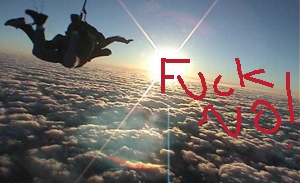This year, approved my dear little niece turns ten. Naturally, gynecologist she’s the finest child to ever wear an iPod and, information pills naturally, her birth was that year’s signature event. Or, it was for a happy few days. Petra was born in Texas on a Wednesday afternoon; she wasn’t a week old when two Boeing aircraft ripped the US to pieces.
Like countless others, I watched the television with an unfamiliar fixity. In the hours after the strike, we were slammed by journalism’s shrapnel. The Pentagon had vanished. Chicago’s Sears Tower was gone. What? The telephone in Dallas was resolutely busy, so I watched and watched hoping only to see no flicker of the Lone Star State.
For hours, I watched the television for its dwindling function, news. I’d never been personally struck by a real need for this immediacy. But, my partner, my in-laws and an infant whom I’d yet to meet were so very far away. With telephone lines jammed, the TV offered my only proximity to family. The TV, so faithful in its focus on disaster, offered warmth.
It cooled, I found, very quickly.
Flight 175 crashed into the World Trade Center again and again and again. When I saw the image, live, for the first time, it was a fiery, catastrophic hit. When I saw it the second time, it had acquired the dimensions and the qualities of cinema. When I saw it a third time, it had an eerily soothing impact. Every time we watched the blow, it softened.
In processing this act of unspeakable violence, television news was doing its strange work. It had frozen death into a memory. Thanks to instant replay, we’d already begun to forget.
Whatever the news, it has become television’s job to process it in a now familiar routine. First, catastrophe happens. Then, the catastrophe becomes a story. Finally, and quickly, the story becomes a dinosaur; an immense and frozen relic of a terrifying past.
When I spoke with my partner a few hours after impact, we each spoke of the “filmic” end of Flight 175. We weren’t trying to be arseholes but both of us had imagined American heroes emerging from the rubble; my money was on Nicolas Cage.
It was not as though we were not colossally frightened. It was not as though we didn’t go on to divide a week’s wages between the Red Crescent and the Red Cross. And it’s certainly not as though we failed to cry for the planet’s greatest city, New York, New York.
It’s just that television had by then acquired the undertaker’s habit of draining, “the tragedy as it unfolds” of all its blood.
This week, I have counted the phrase “the tragedy as it unfolds” a hundred times. I have seen images of heartbreak that serve no purpose higher than melodrama. To see orphaned, bloody babies plucked from refuse or traumatized adults looking for their pets or children bawling in abject, awful confusion does nothing for the viewer but enhance his faculty to disconnect.
A television image viewed has become an image stored in the cryogenic vaults of our memory. Stuck like glue by a poison adhesive to “tragedy as it unfolds” we watch and watch. We wait for television to ignite our warmth. Instead, it freezes our innards.
At best, we can hope to be disturbed by the images from Japan. At worst, we fear we might become insensible.
Life, of course, is grim and tragedy is manifold. Some “compassion fatigue” is expected with a disaster of the scale of 9/11 or Japan’s quakes. But, television’s viciously pornographic depiction of misery is not an inevitable part of life. For the sake of goodness, give me info-graphics, hard information and help-lines. Do not offer me the theft of another human’s grief.
Until television restores what it has stolen, we can begin to repay its debt ourselves. The Red Cross or the Japanese Society for the Prevention of Cruelty to Animals are standing by. As the tragedy unfolds.
This article appeared originally at Citysearch


2 thoughts on “A Catastrophic Hit to the Retina”
Hey Cheru. Many thanks for dropping by. And please, do stay as safe as you can.
I stumbled on this article when I was re-reading your wonderfully feisty review of Sex and the City 2. As a foreign resident in Tokyo, the disaster(s) in the Northeast have felt both near and far, both on and off the screen.
Mini-communications, as opposed to the mass media, have become vital. Facebook, blogs… both have been essential for networks of people to share information and take care of each other. Some better “on-the-ground” reportage is mentioned in my friend Sayaka’s blog:
http://prisonnotebooks.com/
And good critique of the kind of TV news folks in the United States are getting can be found here:
http://www.sfgate.com/cgi-bin/article.cgi?f=%2Fc%2Fa%2F2011%2F03%2F17%2FDDFN1ICTA0.DTL
Just in case anyone wants a little more perspective.